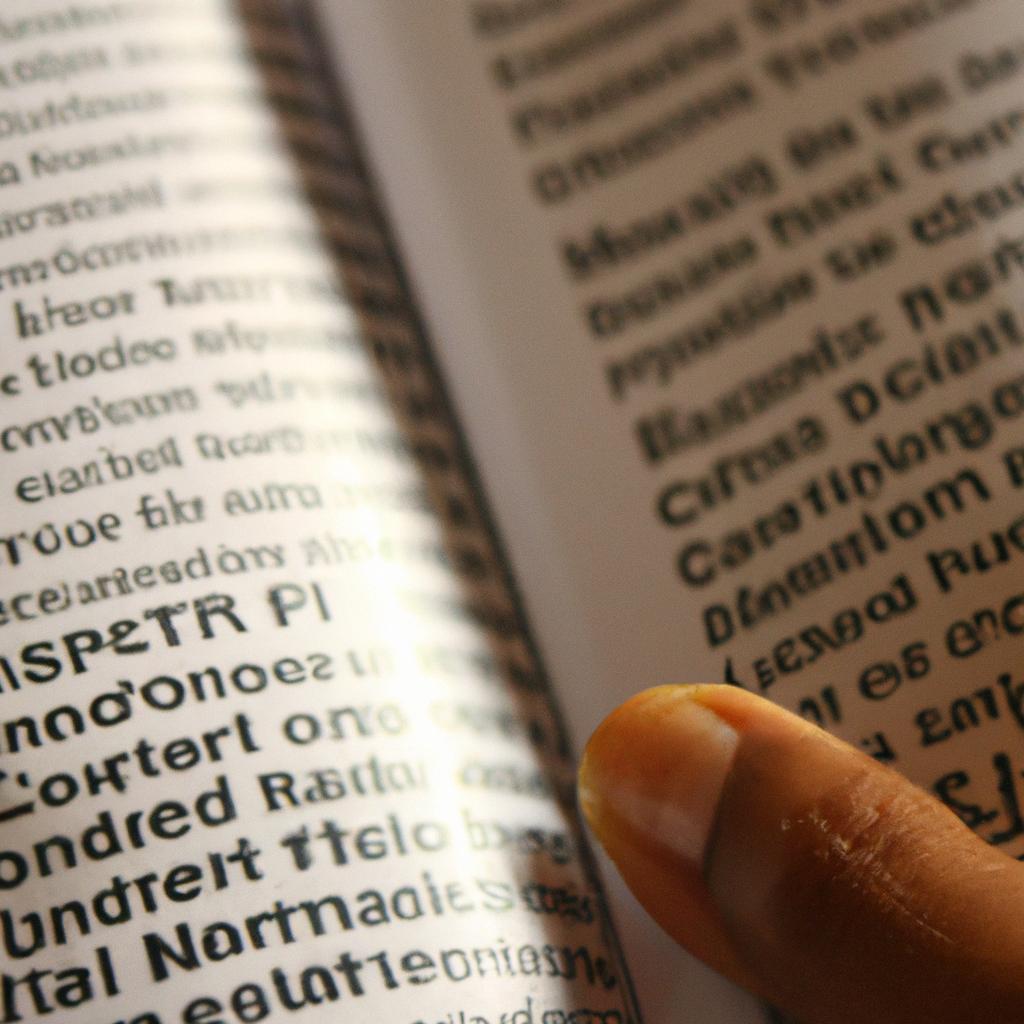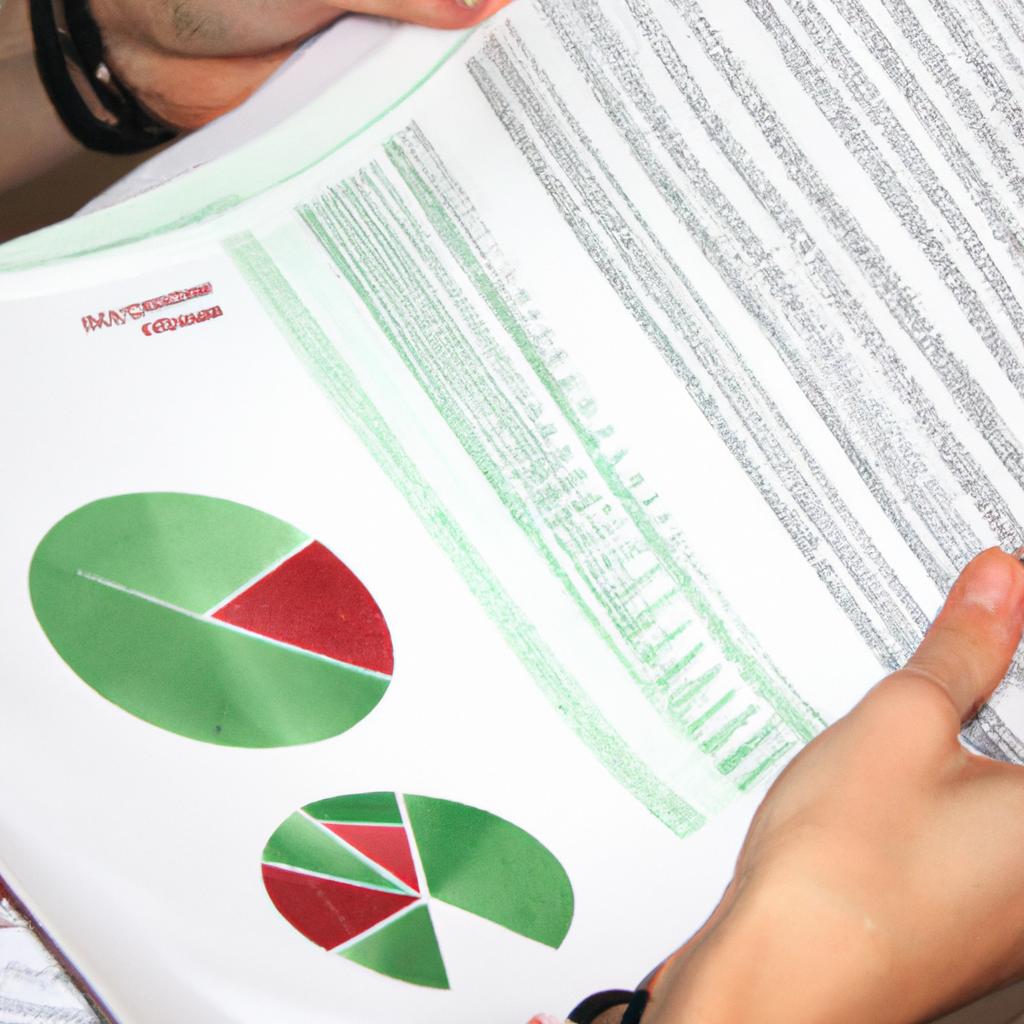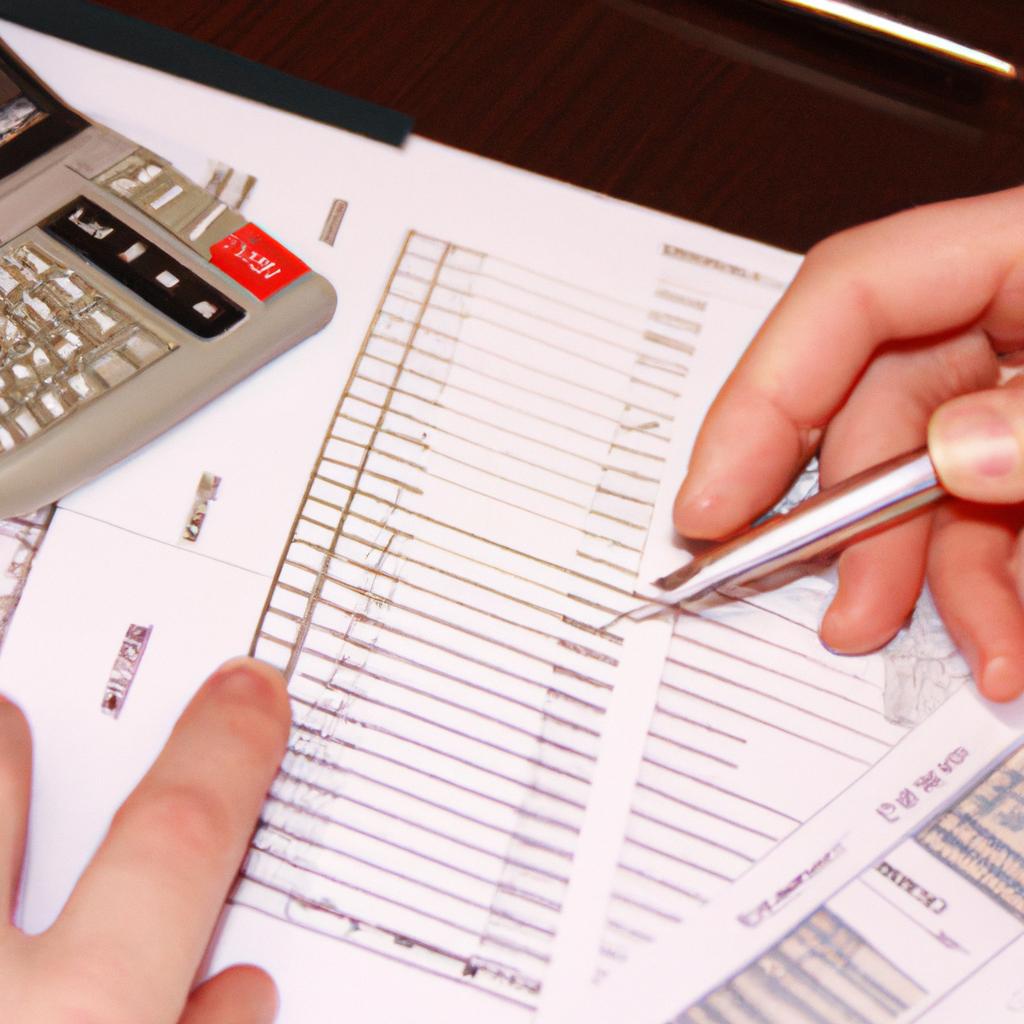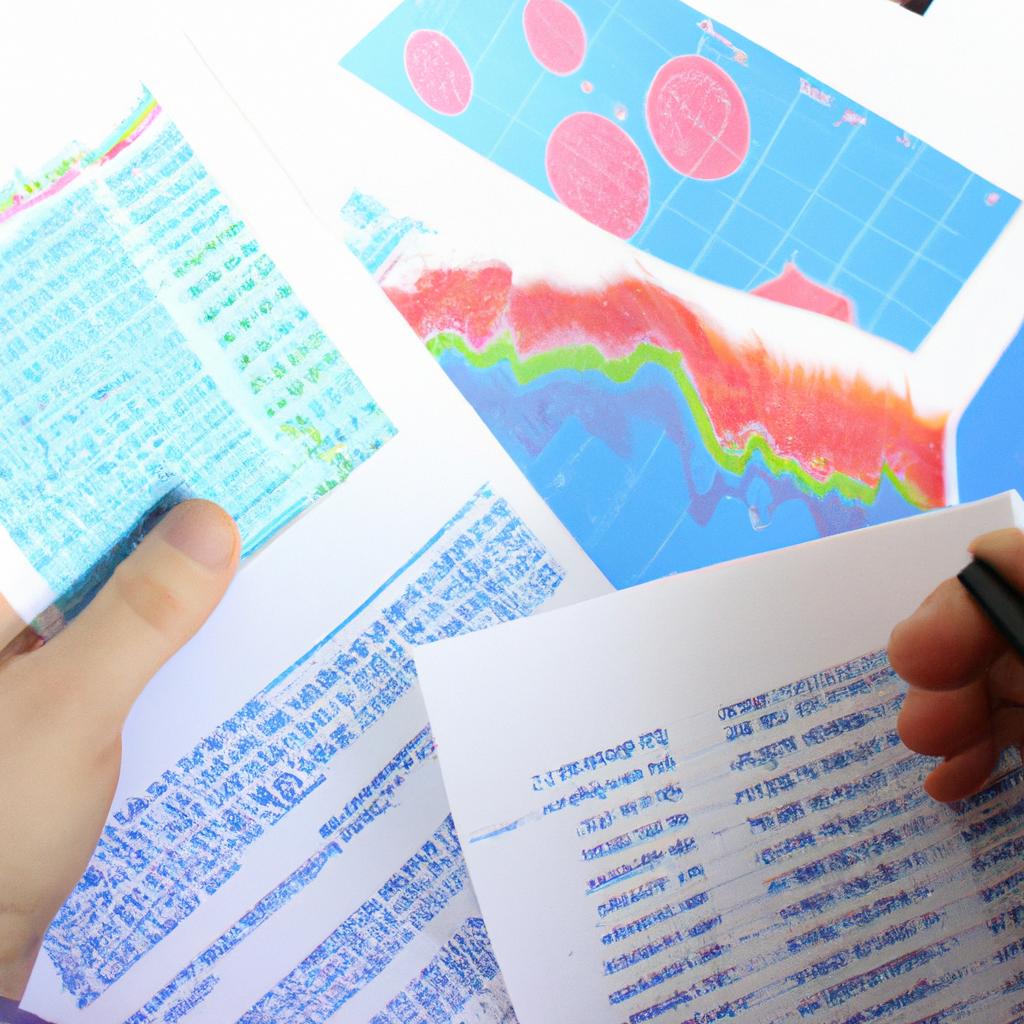Bond Yield: A Guide for Investing in Bonds

Bond Yield: A Guide for Investing in Bonds
Imagine you are an investor seeking to diversify your portfolio and generate stable income. You come across a bond issued by XYZ Corporation offering an attractive yield of 5%. Intrigued, you start pondering the significance of this “yield” and how it can impact your investment decisions. Understanding bond yields is crucial for investors as they provide insights into the potential returns on bond investments. This article aims to serve as a comprehensive guide to help investors navigate the complex world of bond yields, enabling them to make informed decisions when investing in bonds.
Investors often encounter terms such as coupon rate, current yield, and yield to maturity when considering bond investments. Each of these measures provides distinct information about the return on investment associated with a particular bond. The coupon rate represents the annual interest payment expressed as a percentage of the face value or par value of the bond. For instance, if you hold a $1,000 face value bond with a 4% coupon rate, you will receive $40 per year in interest payments. While this seems straightforward, understanding other key components like market price fluctuations and time until maturity is essential to evaluate the true potential return from holding that specific bond over its lifetime.
In summary, In summary, bond yield encompasses various measures such as the coupon rate, current yield, and yield to maturity that provide insights into the potential returns on bond investments. Understanding these measures and considering factors like market price fluctuations and time until maturity is crucial for evaluating the true potential return from holding a specific bond over its lifetime. By comprehending bond yields, investors can make informed decisions when diversifying their portfolios and seeking stable income through bond investments.
Understanding Bond Yield
Imagine you have $10,000 to invest and are considering purchasing a bond. You come across two options: Company A offers an annual interest payment of 5% on their bond while Company B offers an annual interest payment of 8%. Which one would you choose? The decision may seem obvious; however, it is important to understand the concept of bond yield before making any investment decisions.
Bond Yield Defined:
Bond yield refers to the return an investor can expect from owning a particular bond. It is typically expressed as a percentage and represents the income generated by the bond relative to its price. Understanding bond yield is crucial for investors as it helps them evaluate whether a bond investment will provide adequate returns based on their financial goals and risk tolerance.
Factors Influencing Bond Yield:
To better comprehend how bond yield works, let’s explore some key factors that influence it:
-
Coupon Rate: The coupon rate is the fixed interest rate paid by the issuer to the bondholder over the life of the bond. A higher coupon rate generally leads to a higher yield since it provides greater cash flow potential.
-
Market Demand: Bond prices fluctuate based on supply and demand dynamics in the market. When there is high demand for bonds, their prices tend to rise, resulting in lower yields. Conversely, when demand decreases, prices fall, leading to higher yields.
-
Credit Rating: The creditworthiness of the issuer plays a significant role in determining bond yield. Bonds issued by entities with strong credit ratings (such as government or highly reputable corporations) often offer lower yields compared to those with lower credit ratings due to perceived differences in default risk.
-
Time Until Maturity: The length of time until a bond reaches maturity affects its yield as well. Generally, longer-term bonds carry higher yields because they expose investors to more uncertainty and inflation risks over extended periods.
Table – Example Comparison of Bond Yields:
| Bond Type | Coupon Rate (%) | Market Price ($) | Yield (%) |
|---|---|---|---|
| Company A | 5 | $1,000 | 5 |
| Company B | 8 | $800 | 10 |
In summary, bond yield is a crucial concept to understand when considering investing in bonds. By evaluating factors such as coupon rate, market demand, credit rating, and time until maturity, investors can make informed decisions about which bonds align with their investment goals.
With a solid foundation on understanding bond yield established, let’s now explore the key factors that influence it in more detail.
Factors Affecting Bond Yield
In the previous section, we explored the concept of bond yield and its significance in evaluating investment opportunities. Now, let’s delve deeper into the factors that can affect bond yield and ultimately impact your investment decisions.
Consider a hypothetical scenario where an investor is analyzing two similar bonds with different yields. Bond A offers a yield of 3%, while Bond B provides a higher yield of 5%. At first glance, one might assume that Bond B is the better option due to its higher return. However, it’s crucial to understand the underlying factors influencing these yields before jumping to any conclusions.
Several key elements contribute to variations in bond yields:
-
Creditworthiness: The credit quality of a bond issuer plays a pivotal role in determining its yield. Bonds issued by organizations with lower credit ratings typically offer higher yields as compensation for their increased risk. Conversely, bonds from highly reputable entities tend to have lower yields since investors are more confident about receiving timely interest payments and principal repayment.
-
Time to Maturity: Another critical factor affecting bond yield is the remaining time until maturity. Generally, longer-term bonds carry higher yields than shorter-term ones due to the increased uncertainty associated withholding investments over extended periods.
3.Inflation Expectations: Anticipated changes in inflation rates can greatly influence bond yields. When inflation expectations rise, investors demand higher returns on their fixed-income investments to preserve purchasing power. Consequently, this leads to an increase in bond yields as issuers must attract buyers by offering competitive rates.
4.Interest Rate Movements: Changes in prevailing interest rates significantly impact bond prices and subsequent yields. As interest rates rise, existing bonds with lower coupon rates become less attractive compared to newly issued bonds with higher coupon rates. To offset this disparity and entice buyers, sellers may reduce prices on existing bonds, resulting in increased yields.
To further illustrate these concepts visually:
- Emotional Bullet Points –
- Higher-yield bonds can offer greater returns, but they often come with higher risk.
- Bond yields are influenced by factors such as creditworthiness, time to maturity, inflation expectations, and interest rate movements.
- Understanding these factors is crucial for making informed investment decisions.
- Emotional Table –
| Factors | Influence on Bond Yields |
|---|---|
| Creditworthiness | Higher risk = Higher yield |
| Time to Maturity | Longer-term bonds = Higher yield |
| Inflation Expectations | Rising inflation rates = Higher yield |
| Interest Rate Movements | Increasing interest rates = Higher yield |
As you can see from the bullet points and table above, bond yields are impacted by a variety of interrelated factors. By carefully considering these elements when evaluating potential investments, you can make more informed decisions that align with your financial goals.
Transitioning into our next section about “Types of Bond Yields,” we will explore how different calculations provide valuable insights into various aspects of bond performance and market dynamics.
Types of Bond Yields
In the previous section, we explored the various factors that can significantly impact bond yield. Now, let’s delve deeper into some specific types of bond yields to gain a comprehensive understanding of their intricacies and implications.
Consider a hypothetical scenario where an investor is evaluating two bonds with identical maturities but different coupon rates. Bond A offers a fixed annual coupon rate of 5%, while Bond B has a variable coupon rate tied to prevailing market interest rates. At first glance, one might assume that Bond A would offer higher yield since its coupon payments remain constant over time. However, this assumption overlooks the potential for changes in market interest rates, which could affect both current income and future reinvestment opportunities.
To better comprehend the dynamics at play, let us examine four key elements influencing bond yield:
-
Coupon Rate: The stated interest rate on a bond determines the periodic cash flow an investor will receive as coupon payments. Higher coupon rates generally lead to higher yields, assuming all other factors remain equal.
-
Market Interest Rates: Changes in overall economic conditions influence market interest rates, impacting new bond issuances and subsequently affecting existing bonds’ yields. When market interest rates rise above a bond’s coupon rate, its price typically decreases, resulting in an increased yield.
-
Credit Risk: Bonds issued by entities with lower credit ratings tend to carry higher yields as they are perceived to pose greater default risk compared to highly rated counterparts.
-
Time to Maturity: Longer-term bonds usually have higher yields due to increased uncertainty surrounding distant future events such as inflation or changes in monetary policy.
Let’s now visualize how these factors can interact using the following table:
| Bond A (Fixed Coupon) | Bond B (Variable Coupon) | |
|---|---|---|
| Coupon Rate | 5% | Variable |
| Market Interest | 4% | 5% |
| Credit Rating | AAA | AA |
| Time to Maturity | 10 years | 10 years |
| Yield | 5.00% | 5.25% |
As depicted in the table, even though Bond A initially appears more attractive with its fixed coupon rate of 5%, Bond B’s yield surpasses it due to its variable coupon rate adjusting to prevailing market interest rates. Additionally, the slightly lower credit rating of Bond B and a modest increase in market interest rates contribute to its higher yield.
Understanding these factors is crucial for investors seeking to make informed decisions that align with their risk tolerance and investment goals. In our subsequent section about Calculating Bond Yield, we will explore how these influences can be quantified and utilized to assess potential returns on bond investments effectively.
Calculating Bond Yield
Transitioning from the previous section on different types of bond yields, let us now delve into understanding how to calculate bond yield. By gaining a comprehensive grasp of this calculation, investors can make informed decisions regarding their investment strategies.
To illustrate the process, consider an investor who purchases a corporate bond with a face value of $1,000 and an annual coupon rate of 5%. The bond has a remaining term of five years until maturity. In order to determine its yield, several factors must be taken into account.
Firstly, it is important to understand that the yield on a bond fluctuates based on market conditions. Therefore, the current market price of the bond needs to be determined. Let’s assume that our hypothetical bond is currently priced at $950.
To calculate the bond yield, we need to incorporate both the annual interest payments (the coupon) as well as any potential capital gains or losses upon selling the bond before maturity. Here are the key steps involved:
- Calculate annual interest payments: Multiply the face value of the bond by its coupon rate. In our example, this would be ($1,000 x 0.05 = $50).
- Determine total cash inflows: Add up all future interest payments plus the principal repayment upon maturity.
- Compute holding period return: Divide the total cash inflows by the current market price and express it as a percentage.
- Adjust for time: Since most bonds pay coupons semi-annually while we calculated using an annual basis in step one above; divide your result by two if necessary.
By following these steps, investors can accurately assess and compare different bonds’ yields effectively when making investment decisions.
In transitioning towards our next section about “Importance of Bond Yield for Investors,” understanding how to calculate bond yield provides investors with valuable insights into evaluating various investment options based on their expected returns and risk levels without solely relying on nominal values such as coupon rates or face values.
Importance of Bond Yield for Investors
Bond Yield and its Significance in Investment
In the previous section, we discussed how to calculate bond yield. Now, let’s delve deeper into understanding the importance of bond yield for investors. To illustrate this concept, consider a hypothetical scenario where an investor is deciding between two bonds: Bond A with a coupon rate of 4% and Bond B with a coupon rate of 2%.
One key reason why bond yield is crucial for investors is that it helps assess the potential return on investment. By comparing the yields of different bonds, investors can make informed decisions about which bonds offer higher returns. In our example, even though both Bond A and Bond B have different coupon rates, their respective yields may vary due to factors such as market conditions or credit ratings.
Moreover, bond yield acts as a barometer for evaluating risk levels associated with specific bonds. Generally, high-yield bonds are considered riskier investments because they often come from issuers with lower credit ratings. On the other hand, low-yield bonds usually belong to financially stable entities and are perceived as less risky. This relationship between yield and risk allows investors to balance their portfolios based on their risk tolerance and investment goals.
To further emphasize the significance of bond yield in decision-making processes, here is a bullet point list highlighting some key points:
- Bond yield indicates the annualized return an investor can expect from holding a bond.
- It enables comparison between different types of fixed-income securities.
- Higher bond yields generally reflect increased risks or uncertainties associated with the issuer.
- Investors often use bond yield as part of their asset allocation strategies.
Additionally, we can visualize these concepts by considering the following table:
| Type of Bond | Coupon Rate | Yield | Risk Level |
|---|---|---|---|
| Bond A | 4% | 3% | Moderate |
| Bond B | 2% | 5% | High |
As we can see from the table, even though Bond A has a higher coupon rate compared to Bond B, its yield is lower due to increased risk associated with the issuer. This example demonstrates how bond yield provides valuable information for investors when making investment decisions.
In conclusion, understanding and analyzing bond yield is crucial for investors seeking to maximize their returns while managing risks. By implementing these strategies, investors can make informed choices in order to achieve their financial objectives effectively.
Strategies for Maximizing Bond Yield
Section Title: Strategies for Maximizing Bond Yield
Having established the significance of bond yield in investment decisions, it is crucial to explore various strategies that investors can employ to maximize their bond yields. By implementing effective strategies, investors can enhance their returns and optimize their portfolio performance.
Strategies for maximizing bond yield:
-
Diversification: One key strategy for optimizing bond yield is diversifying investments across different types of bonds. This approach helps mitigate risks associated with a single issuer or sector by spreading investments across multiple bonds. For instance, an investor could consider investing in government bonds, corporate bonds, and municipal bonds to achieve a diversified portfolio.
-
Duration management: Managing the duration of bond holdings is another important strategy for maximizing yield. Investors need to carefully assess and adjust the average maturity of their bond portfolio based on market conditions and interest rate expectations. By monitoring changes in interest rates and adjusting durations accordingly, investors can potentially capitalize on rising rates while minimizing losses during periods of falling rates.
-
Active bond selection: Actively selecting individual bonds rather than relying solely on passive index funds can be a fruitful strategy for boosting bond yields. Conducting thorough research on credit ratings, issuers’ financial health, economic trends, and other relevant factors allows investors to identify undervalued or high-yield opportunities within the fixed income market.
- Increased potential for higher returns
- Opportunity to generate regular income streams
- Enhanced capital preservation through risk mitigation
- Potential inflation protection due to higher coupon payments
Table showcasing hypothetical data:
| Bond Type | Coupon Rate (%) | Yield-to-Maturity (%) |
|---|---|---|
| Government | 3 | 2 |
| Corporate | 4 | 5 |
| Municipal | 2 | 3 |
| High-Yield | 7 | 8 |
By considering the strategies mentioned above, investors can optimize their bond yield and achieve their investment objectives. However, it is important to note that individual circumstances may vary, and consulting with a financial advisor is recommended to tailor these strategies according to specific goals and risk tolerance.
Incorporating effective diversification techniques, actively managing duration exposure, and selecting bonds wisely empower investors to maximize returns while effectively navigating market fluctuations. By applying these prudent strategies, investors can enhance their bond yields and potentially attain greater long-term financial success in the realm of fixed income investing.






